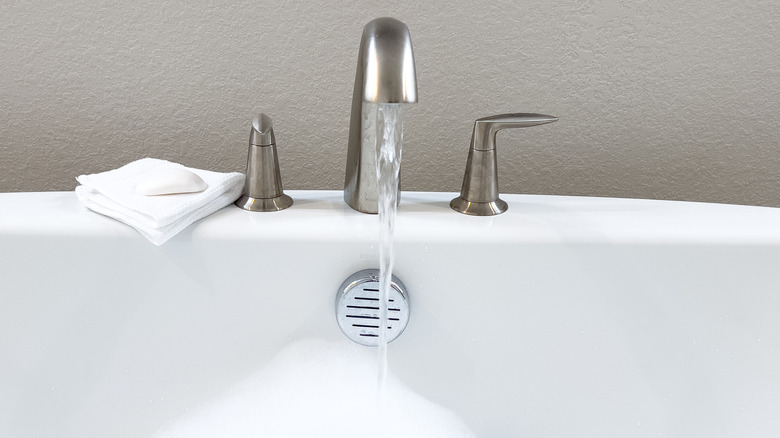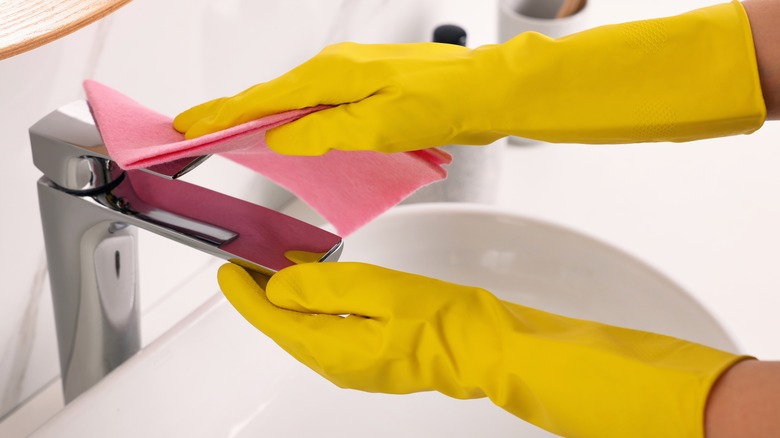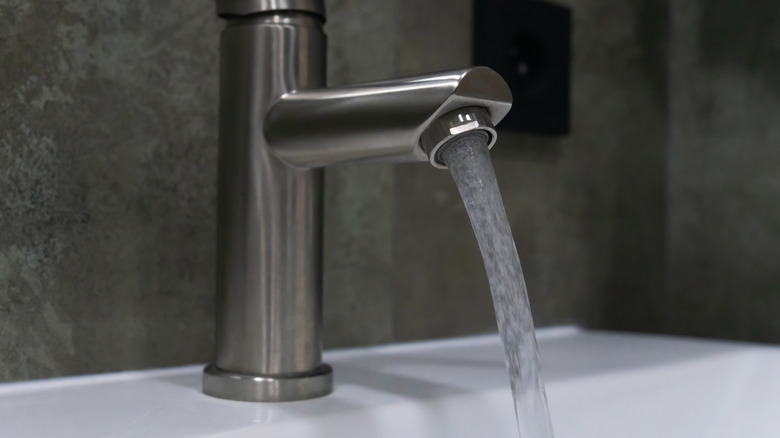How To Recondition Your Polished Nickel Bathroom Faucet
We may receive a commission on purchases made from links.
Over time, any polished nickel faucet will eventually lose its luster to water spots, soap scum, and minor scratches. Reconditioning them will help restore their shine and preserve the nickel plating beneath. For this project you'll need a few supplies: a high-quality metal polish like the Flitz metal polish and cleaner paste, a micro-fiber cloth, and a fine-grit Scotch-Brite pad (look for the gray or white pads, not the abrasive green ones). Avoid household cleaners like bleach or vinegar when cleaning metal surfaces, as these can dull the nickel finish. Instead, start with a gentle soap to remove any dirt or grime before polishing.
The project should take around 30 to 45 minutes, depending on your faucet and should be done in a well-ventilated area as some polishes emit strong fumes. Metal polishes work by using tiny abrasive particles and lubricants that change the surface without damaging the underlying plating, so as with any project like this, always test products on a small, inconspicuous area first before committing fully. This method will work best with faucets that are completely intact; if you see brass peeking through worn areas, you may need to get a professional replating instead.
Restoring nickel's mirror shine
You'll start by thoroughly drying the faucet with a microfiber cloth, as water would dilute the polish. Apply a small pea-sized amount of the metal polish to another cloth and rub it into the nickel faucet by using small circular motions. The polish will initially look cloudy, but as you continue, it will turn clear and the shine will come through. Buffing helps create mild heat through friction which helps the polish penetrate the nickel. If you find that the faucet still looks tarnished, reapply polish to a fresh cloth and repeat the process, but avoid putting too much pressure as that could affect the plating.
After you've reached an even polish, switch to the Scotch-Brite pad. Hold the pad flat against the metal and brush straight in a single direction, following the original grain lines if you can see them. Use very light pressure as the goal is to create micro scratches that reflect the light. Unlike chrome, nickel has a matte finish that looks brushed, giving it a more elegant look. Frequently wipe the surface with a clean cloth and check your progress. The entire process should be done with patience. Rushing it can lead to an uneven finish or accidental over-polishing.
The do's and don'ts of nickel faucet care
Even with proper technique, there are some mistakes you should look out for when reconditioning nickel. Never use steel wool or overly-abrasive sponges, they can quickly scratch too deep, ruining your faucet's finish. Furthermore, try not to polish the same spot over and over; nickel plating is often very thin and over-polishing will quickly wear through it. Always read the labels and research any cleaner to make sure it's appropriate for your nickel. After polishing, take the time to seal your work with a nickel-safe wax or protectant, like Flitz faucet wax.
Regular maintenance and cleaning is important when dealing with nickel hardware. Wipe your faucet dry whenever it gets wet after use. If you have a vintage piece, be sure to research it before attempting any of the above suggestions to make sure the process will work the same as a modern fixture. With proper care and a little fix-up from time to time, your nickel faucet will provide you with years of use.


